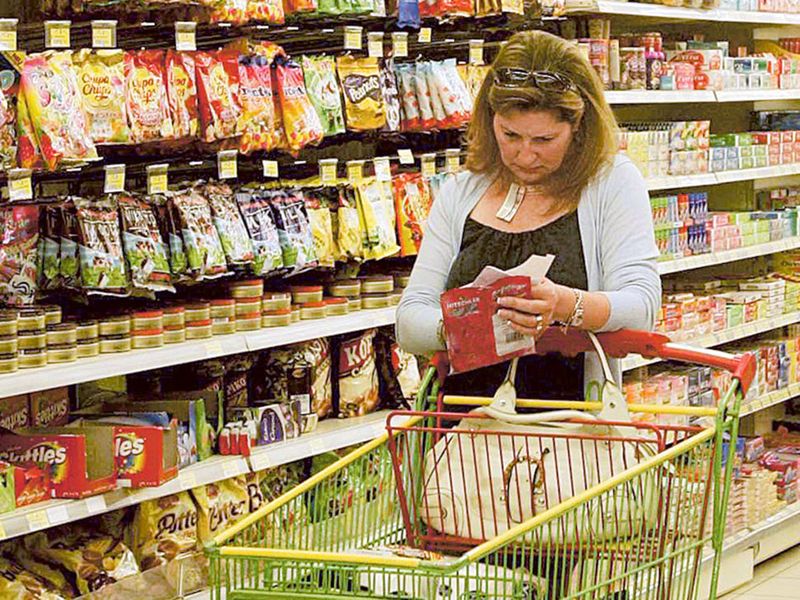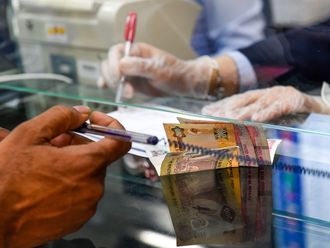
Dubai: We all have heard of inflation. But what then is 'shrinkflation'?
Prices are going up globally for a lot of products currently, but instead of raising prices, multiple retail experts say a lot of companies are shrinking their products sizes. This is what is commonly referred to as ‘shrinkflation’.
Although it’s quite evident that with inflation prices are going up worldwide on everything from fuel to groceries, ‘shrinkflation’ describes the process of combating inflation by reducing the size of a packaged item while maintaining the same price.
Does it apply to all products?
A number of surveys conducted in 2022 indicate how you're most likely to see shrinkflation in packaged consumer products, like drinks and snacks. You might also see it in things like cleaning and paper products, like napkins and paper towels.
Matter experts add that the retail strategy or common practice for several industry giants worldwide is to change just little bits at a time so people don't notice.
There is no obligation for most companies to keep their products the same size or quantity just as there is generally no obligation for shoppers to buy the product.
How does shrinkflation work?
If a company reduces the size of a product by a small amount, for example, a 5 per cent reduction, most consumers probably wouldn't notice. However, if the same company reduced the size of their product by 50 per cent consumers would notice right away.
So, the changes will be small, but spread out across millions of products, a company could save a lot of money.
This is why retail consultants advise consumers who are price sensitive to read the unit price information and not look at the retail price alone. Read the unit price information and track that.

Why does shrinkflation happen?
The primary reason why this happens is because companies face higher prices for their supplies and may try to pass that onto the consumer. Downsizing a product reduces costs for manufacturers.
Although shoppers tend to be price-sensitive, they may not notice subtle changes in packaging, or read the fine print on the size or weight of a product.
The result is that consumers are less likely to notice getting less if the price is the same. Historical pattern indicates how downsizing comes in waves, and it tends to happen during times of increased inflation.
When a manufacturing company’s bottom lines are being pinched, they essentially have three basic options: raise the price directly, take a little bit out of the product, or reformulate the product with cheaper ingredients.
However, companies most often want to keep their customers happy without direct increases in a product’s price. They also want to keep their prices competitive with companies selling similar products.
So not all product size changes stem from profit seeking. New regulations that limit calories or the amount of sugar in a product can cause a product’s size to change.
Companies use a PPP model, or Price Pack Purchase model, to determine how to target products in specific channels for the right prices.
The essence of a Price Pack Purchase model is to provide consumers a viable selection of products that meet their needs at the price points they are willing to pay, enhancing a brand's overall value in the outlets where shoppers shop for any given purchase occasion.
Shrinkflation: Now rampant with cost increases across the board
Shrinkflation is widely used by producers in the food and beverage industry. It has become a common tactic to help producers deal with their own inflation problems from suppliers.
Companies researching shopper mentality determined that their customers would perhaps begin to look for substitute products if confronted with yet another price increase. Shrinkflation is the fix they found.
Rising production costs are generally the primary cause of shrinkflation. Increases in the cost of ingredients or raw materials, energy commodities, and labour increase production costs and subsequently diminish producers’ profit margins.
Reducing the products’ weight, volume, or quantity while keeping the same retail price tag can improve the producer’s profit margin. At the same time, the average consumer will not notice a small reduction in quantity. Thus, sales volume will not be affected.
Fierce competition in the marketplace may also cause shrinkflation. The food and beverage industry is generally an extremely competitive one, as consumers are able to access a variety of available substitutes.
Therefore, producers look for options that will enable them to keep the favour of their customers and maintain their profit margins at the same time.

What is the difference between shrinkflation and downsizing?
Until about a decade ago, shrinkflation was referred to by its original name, downsizing. US technology entrepreneur and economist Pippa Malmgren rechristened it ‘shrinkflation’, and the term stuck.
Downsizing and shrinkflation both refer to the same thing: companies reducing the size or quantity of their products while charging the same price or even more.
Retail experts often refer to shrinkflation or downsizing as a “sneaky price increase”. Shoppers tend to be price conscious, but they're not net-weight conscious.
Studies reveal how shoppers can tell instantly if they're used to paying Dh2.99 for a carton of orange juice and that goes up to Dh3.19. But if the orange juice container goes from 64 millilitres to 59 millilitres, they're probably not going to notice.
If you notice that a product has shrunk or reduced the number of included items, consider competitors who offer a similar product at a lower cost per ounce or item. Compare per unit prices to see which product provides a better deal.
Shrinkflation also offers an opportunity to opt out of buying packaged foods. For instance, retailers can make cereal boxes and granola bars smaller, but they can't shrink apples or strawberries.
So reducing the amount of packaged food you purchase will protect you against extra costs stemming from shrinkflation.
Shrinkflation: How do I factor this in my shopping budget?
Shrinkflation is a form of hidden inflation. Instead of increasing the price of a product, something that would be immediately evident to shoppers, producers reduce the size of the product while maintaining the same price.
The absolute price of the product doesn’t go up, but the price per unit of weight or volume has increased. The small reduction in quantity is usually unnoticed by shoppers.
However, keep in mind that shrinkflation cannot be viewed as a fraud or misrepresentation of products. Producers always indicate the weight, volume, or quantity of their products on packaging labels. It’s not illegal – it’s just a sneaky way to pass the cost of inflation to customers or shoppers like us.
Although the shopper ultimately pays more money for this shrinkflation, since they pay the same price for a lesser amount, the reality is they may not notice without reading the fine print on packaging.
Consumers can fight shrinkflation by looking at a product’s ‘unit pricing’ at the store, which shows the cost per ounce or other unit of measure, letting buyers more easily judge which brand offers the best relative value.
Retail and financial experts reiterate that ‘cost per unit’ is your best weapon against shrinkflation. Consumers should also get more accustomed to examining packaging for net weight, looking beyond a brand’s marketing.
Substituting store brands for higher-priced brand-name items is also a good way to save on grocery bills, often without sacrificing on quality.












